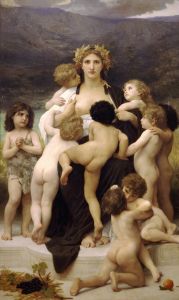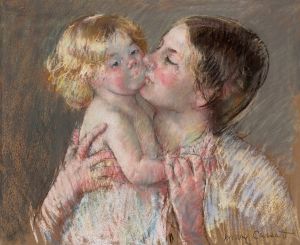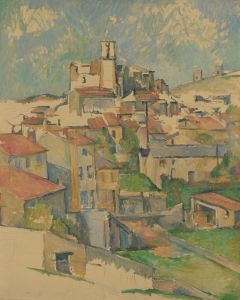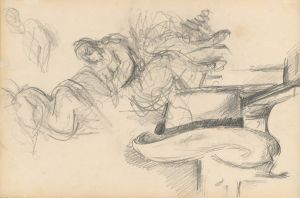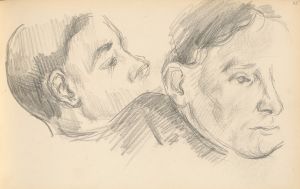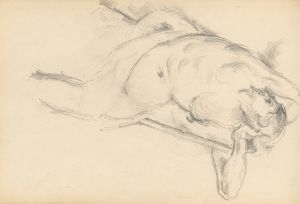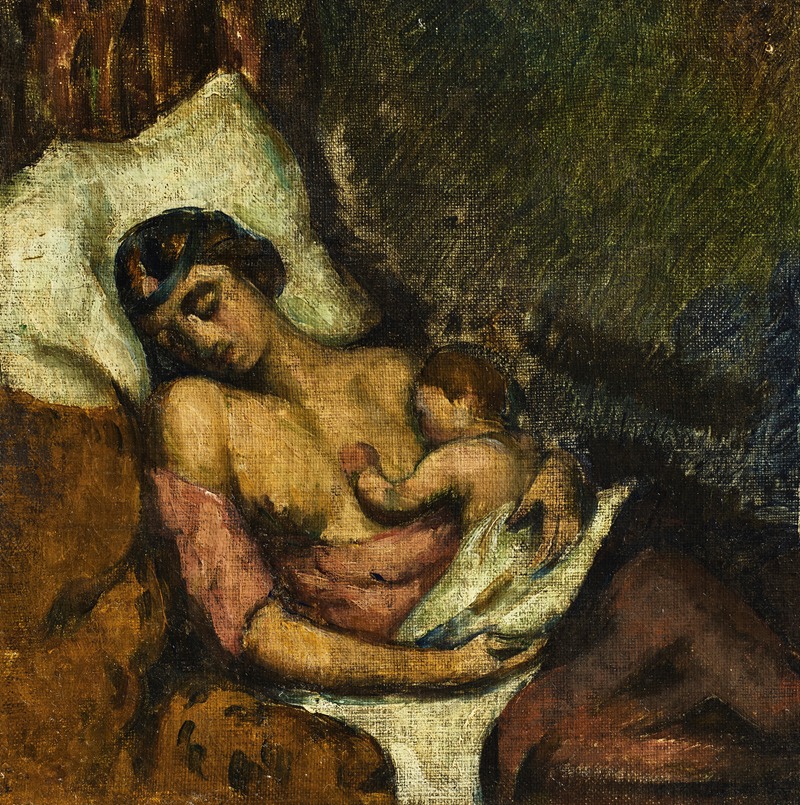
Femme allaitant son enfant
A hand-painted replica of Paul Cézanne’s masterpiece Femme allaitant son enfant, meticulously crafted by professional artists to capture the true essence of the original. Each piece is created with museum-quality canvas and rare mineral pigments, carefully painted by experienced artists with delicate brushstrokes and rich, layered colors to perfectly recreate the texture of the original artwork. Unlike machine-printed reproductions, this hand-painted version brings the painting to life, infused with the artist’s emotions and skill in every stroke. Whether for personal collection or home decoration, it instantly elevates the artistic atmosphere of any space.
Paul Cézanne's "Femme allaitant son enfant" (translated as "Woman Breastfeeding Her Child") is a painting that reflects the artist's exploration of domestic life and the human form. Cézanne, a pivotal figure in the transition from 19th-century Impressionism to 20th-century Cubism, is renowned for his unique approach to form and color, which laid the groundwork for the modernist movements that followed.
This particular work, "Femme allaitant son enfant," is believed to have been created during the late 19th century, a period when Cézanne was deeply engaged in developing his distinctive style. The painting depicts a woman nursing her child, a theme that resonates with the intimate and personal nature of family life. Cézanne's treatment of this subject matter is characterized by his use of color modulation and brushwork, which convey a sense of volume and structure.
Cézanne's approach to painting was methodical and deliberate, often involving the careful study of his subjects. In "Femme allaitant son enfant," this is evident in the way he captures the tender interaction between mother and child. The composition is balanced, with the figures occupying the central space of the canvas, drawing the viewer's attention to the emotional connection between them. The background is typically understated, allowing the figures to stand out and emphasizing the intimacy of the scene.
The color palette used in the painting is muted yet rich, featuring earthy tones that are characteristic of Cézanne's work. This choice of colors not only enhances the realism of the scene but also contributes to the overall mood of tranquility and warmth. Cézanne's brushwork is both precise and expressive, with each stroke contributing to the depiction of form and depth.
Cézanne's influence on modern art cannot be overstated. His innovative use of perspective and form challenged the conventions of his time and inspired future generations of artists. In "Femme allaitant son enfant," one can observe the early signs of the techniques that would later be embraced by Cubists and other modernists. The painting's emphasis on geometric shapes and the simplification of forms are indicative of Cézanne's forward-thinking approach.
While "Femme allaitant son enfant" may not be as widely recognized as some of Cézanne's other works, it remains an important piece within his oeuvre. It exemplifies his ability to capture the essence of human experience through a careful balance of form, color, and composition. The painting is a testament to Cézanne's skill as an artist and his enduring impact on the art world.
In summary, "Femme allaitant son enfant" is a significant work by Paul Cézanne that showcases his innovative approach to painting and his focus on the intimate aspects of human life. Through his use of color, form, and composition, Cézanne creates a scene that is both realistic and emotionally resonant, highlighting his contributions to the development of modern art.





